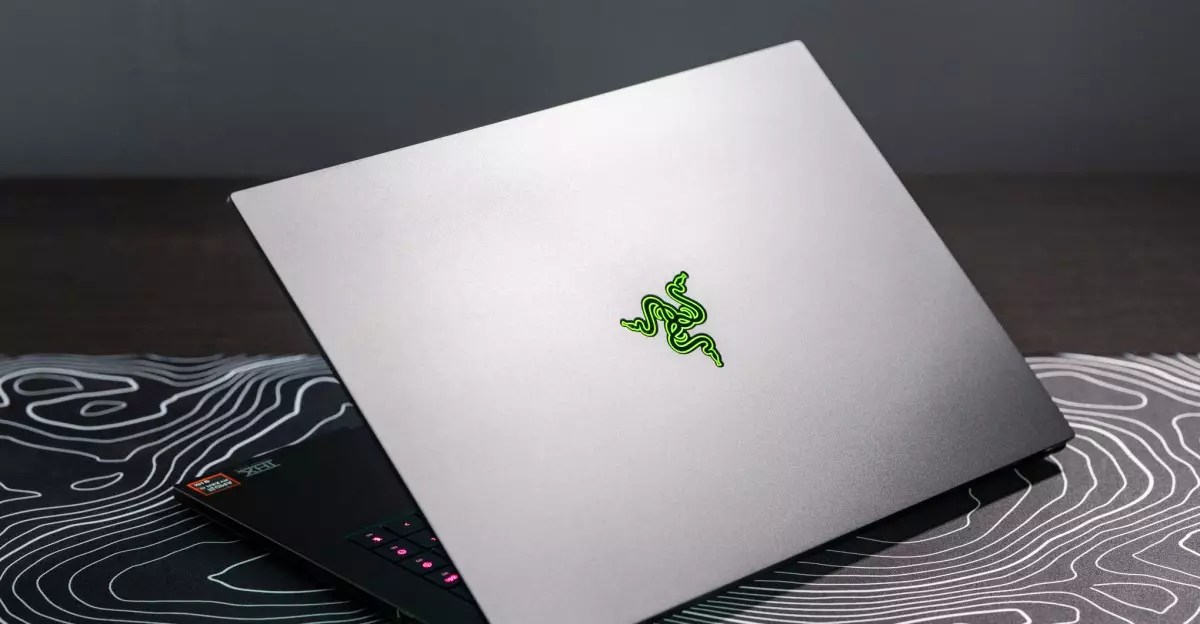The world of gaming laptops has evolved dramatically over the last few years, merging power and portability in ways that continually redefine standards. One standout in this evolving landscape is Razer’s latest offering: the Blade 16, now armed with the formidable Nvidia RTX 5090 GPU. While it aims to blend gaming prowess with a sleek, laptop-like aesthetic akin to the MacBook Pro, my initial impressions reveal a complex portrait of innovation mingled with flaws.
Impressive Design, But Are Looks Enough?
First and foremost, the aesthetic appeal of the Blade 16 is hard to overlook. Razer has committed to creating a thinner and lighter chassis, reducing the weight and thickness compared to its predecessor, which is a much-appreciated change in an increasingly mobile world. The design ethos maintains a classy appearance without veering into the flashy territory common among many gaming laptops. However, as I handled the device, I couldn’t help but wonder: Does a sleek exterior truly suffice if it doesn’t support robust performance across an entire workday?
Even though the laptop houses a sumptuous 16-inch OLED display boasting a 2560 x 1600 resolution and a refresh rate of 240Hz—ideal for fluid gaming experiences and vibrant visuals—such sophistication raises questions regarding practical usability. The in-your-face macro keys, perched uncomfortably on the keyboard’s right-hand side, cause more frustration than function. The design flaw of misplaced keys creates a user experience that leaves much to be desired and hints at a lack of thorough user-oriented design testing.
Performance Under the Lens: RTX 5090 GPU
At the heart of the Blade 16’s allure is the cutting-edge RTX 5090 GPU. While initial benchmarks indicate that this graphics card showcases around a 20 percent efficiency boost over its predecessor, the RTX 4090, my skepticism remains firmly rooted. The promises of power efficiency must be weighed against practical performance during typical usage scenarios. Testing under considerable strain reveals that, while the Blade 16 runs games smoothly, it can struggle during light operations—such as web browsing or document editing—yielding disappointing battery life.
Despite the claims of Nvidia that the RTX 50-series cards dramatically enhance power efficiency, my experience raises credible doubts. Even during moderate productivity tasks, which should lighten the load on GPU demands, the Blade 16’s power management left me longing for more stamina. The expectation of several hours of working capability feels like a naive dream, especially when potent rivals in the market leverage high-end GPUs without faltering in daily productivity.
Price vs. Value: A Conversational Dilemma
Diving head-first into the price point of $4,499.99 for the high-end configuration, the cost raises eyebrows. For that kind of investment, a customer anticipates peak performance at every turn, alongside reliability that doesn’t push them toward frequent troubleshooting conversations. I empathize deeply with users who face the conundrum of paying a premium for a device that cannot meet the demands of daily use seamlessly. In stark contrast, opting for a $2,000 MacBook Pro, which excels in creative workflows without anxiety over battery management, feels like an irresistible bargain.
Not to mention, the budget spared could fund a solid gaming laptop, or even a more powerful desktop rig, summoning an unfair comparison. The allure of possessing one device for all purposes is tempting, but practical limitations start punctuating that dream.
Potential vs. Reality: Awaiting Full Testing
Even amidst the critiques, I remain intrigued by the Blade 16. I applaud Razer for its design ambitions and insistence on high-quality materials that feel good to the touch while providing an excellent visual experience. However, enthusiasm wanes in light of ongoing performance testing and hardware reliability; random blue screens and low battery life cast a cloud over its otherwise dazzling features.
However, it’s essential to pinpoint that reviews are resourceful, and the Blade 16 deserves the opportunity for a more extended consideration as issues may surface—or resolve—over time through software patches or configurations. The promise of extraordinary gaming performance paired with everyday utility reigns at the core of my contemplations. As I plunge further into assessments, separate from initial impressions, I look forward to reclaiming clarity. Until then, the Razer Blade 16 dances delicately on the line between extraordinary and exasperating.


Leave a Reply